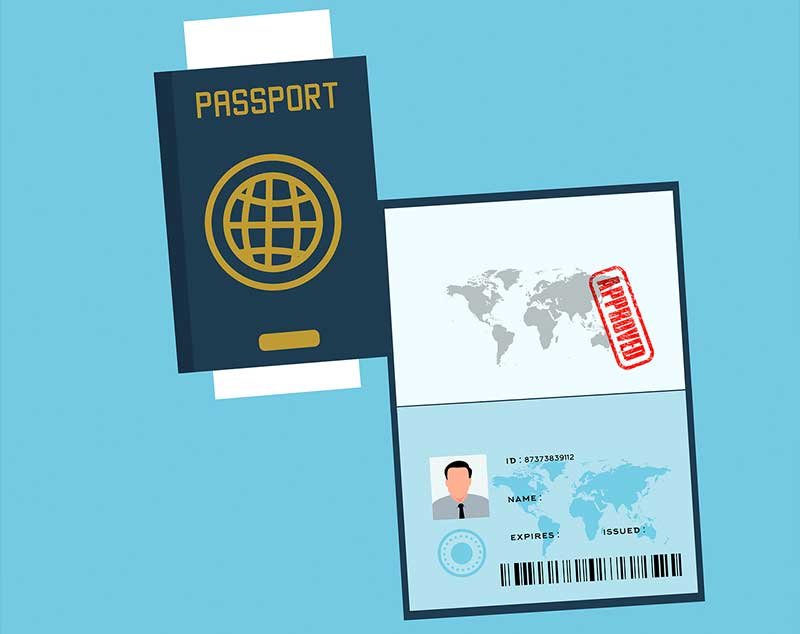Canada is known for its welcoming immigration policies, high quality of life, and diverse culture. Every year, thousands of people from around the world set their sights on obtaining Canadian Permanent Residency (PR), a status that allows them to live and work in Canada indefinitely. But with several pathways available, choosing the right one can be overwhelming. In this blog post, we’ll explore the various routes to Canadian PR and help you determine which path might be the best fit for your situation.
1. Express Entry System
The Express Entry system is one of the fastest and most popular ways to obtain Canadian PR. It’s an online immigration application system that manages applications for three federal economic immigration programs:
•Federal Skilled Worker Program (FSWP): For skilled workers with foreign work experience who want to immigrate to Canada permanently.
•Federal Skilled Trades Program (FSTP): For skilled workers qualified in a skilled trade.
•Canadian Experience Class (CEC): For individuals with at least one year of Canadian work experience.
How Express Entry Works
Applicants create an online profile and are ranked using the Comprehensive Ranking System (CRS), which considers factors like age, education, work experience, and language proficiency. Those with the highest scores are invited to apply for PR through regular draws from the Express Entry pool. If selected, you can receive your PR within six months.
2. Provincial Nominee Programs (PNPs)
If you’re interested in living in a specific province or territory, the Provincial Nominee Program (PNP) might be the right pathway for you. Each province and territory in Canada (except Quebec) has its own PNP, designed to meet its specific economic needs.
How PNPs Work
Applicants must be nominated by a Canadian province or territory, which usually requires a connection to the province (like a job offer or previous study experience). Once nominated, you can apply for PR either through the Express Entry system (which gives you additional CRS points) or through a non-Express Entry stream, which is generally slower.
3. Family Sponsorship
For those with family ties in Canada, the Family Sponsorship program provides a pathway to PR. Canadian citizens and permanent residents can sponsor their spouse, common-law partner, dependent children, parents, or grandparents to become PRs.
How Family Sponsorship Works
The sponsor must commit to financially supporting the sponsored family member for a certain period, and both the sponsor and the applicant must meet specific eligibility criteria. The process can take several months to a few years, depending on the relationship and the country of residence.
4. Quebec Skilled Worker Program (QSWP)
Quebec has its own immigration system, separate from the federal government. The Quebec Skilled Worker Program (QSWP) is for skilled workers who want to live and work in Quebec.
How QSWP Works
Applicants are assessed based on a points system that evaluates factors like education, work experience, age, language skills (in French and English), and adaptability. After being selected by the province of Quebec, you must then apply to the federal government for PR.
5. Atlantic Immigration Program (AIP)
The Atlantic Immigration Program (AIP) is designed to help employers in Atlantic Canada (Newfoundland and Labrador, Prince Edward Island, Nova Scotia, and New Brunswick) hire foreign workers. It’s a fast-track option that also allows international graduates from these regions to stay in Canada permanently.
How AIP Works
You need a job offer from a designated employer in one of the Atlantic provinces. Once you have a job offer, the employer will help you with the application process, which can lead to PR. This program is particularly attractive to those who prefer living in smaller, close-knit communities.
6. Start-Up Visa Program
Entrepreneurs with innovative business ideas can apply for PR through the Start-Up Visa Program. This program is aimed at attracting talented entrepreneurs who can create jobs for Canadians and compete on a global scale.
How the Start-Up Visa Program Works
To qualify, you need the support of a designated organization (venture capital fund, angel investor group, or business incubator) and meet other requirements, such as language proficiency and settlement funds. The application process can take 12-16 months, and it’s ideal for those with a strong entrepreneurial background.
7. Rural and Northern Immigration Pilot (RNIP)
The Rural and Northern Immigration Pilot (RNIP) is designed to bring skilled workers to smaller communities in Canada. This program is aimed at addressing labor shortages in rural and northern regions of the country.
How RNIP Works
To be eligible, you need a job offer from an employer in one of the participating communities. The community then recommends you for PR, and you apply through the federal government. This program is a great option for those who prefer living outside of Canada’s major urban centers.
8. Agri-Food Immigration Pilot
The Agri-Food Immigration Pilot is designed for workers in the agri-food sector, including meat processing, mushroom production, and greenhouse crop production.
How the Agri-Food Pilot Works
Applicants must have at least one year of non-seasonal, full-time work experience in an eligible occupation, a job offer for a full-time position in Canada (outside Quebec), and meet other criteria like language proficiency and education. This pilot provides a pathway to PR for those already working in Canada’s agri-food sector.
Conclusion
Canada offers a variety of pathways to Permanent Residency, each catering to different backgrounds, skills, and goals. Whether you’re a skilled worker, entrepreneur, student, or someone with family ties in Canada, there’s likely a program that suits your needs. Choosing the right path requires careful consideration of your personal circumstances, professional background, and long-term goals. Research each option thoroughly, and if needed, consult with an immigration professional to help guide you through the process. No matter which pathway you choose, Canada offers numerous opportunities for those seeking to build a new life in one of the world’s most welcoming countries.

